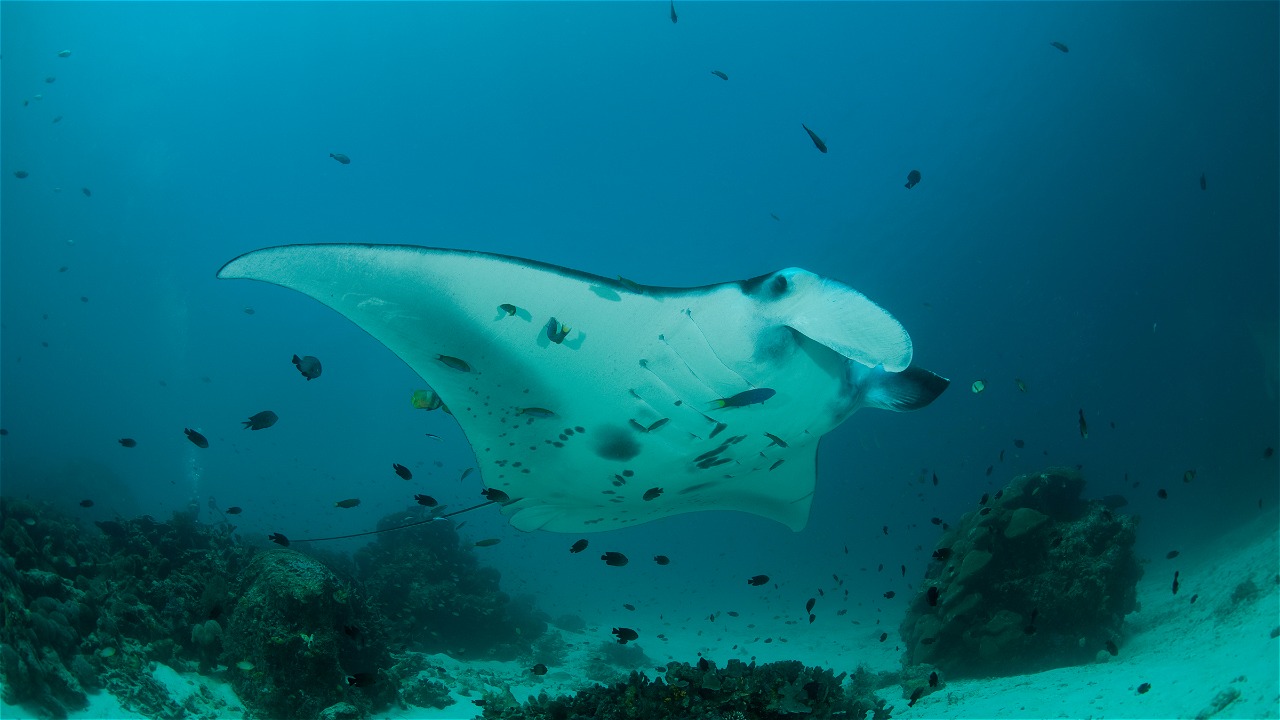HELLOO, MAGNIFICENT MANTA RAYS!
Writer: Indarwati Aminuddin (National Coordinator of Responsible Marine Tourism WWF-Indonesia), Ayu Ginanjar (Responsible Marine Assistant), and IA Dian Kusuma Dewi (Responsible Marine Assistant for Species Issues)
Visitors already exceeded for more than 84 thousand people during the period of January-October 2015 and injected 15 billion IDR to the Komodo National Park-West Manggarai, based on the fact of tourism growth. But there is pressure to conserve habitats and wildlife because visitors mainly come to see the scenery and wildlife, and a most wanted one in deep blue sea: manta rays.
“If it’s (manta dive spot in Komodo National Park) managed properly, it may provide promising economic alternative and if manta rays is not properly conserved it will decline the ability of manta rays to recover themselves,” Ir. Helmi, Head of Komodo National Park, elaborated.
He also mentioned that there are some popular manta sites in the Komodo National Park: Karangmakassar and Manta alley. He also explained that Reef Manta (Manta alfredi) and Oceanic Manta (Manta birostris) are classified by the International Union for the Conservation of Nature (IUCN) as vulnerable species which is lead to extinction in the wild if it is not managed properly. Therefore, a suited managable strategy that will be implemented are needed to protect manta rays.
A marine conservation organizations called MantaWatch promotes awareness, change, and solutions to the threats facing manta rays and other marine wildlife worldwide. One of their program focuses on citizen science approach which provides a low-cost research. This method enables divers, snorkelers and other marine recreational users to record their marine wildlife encounters, and those informations are available in MantaWatch Online. MantaWatch Online aggregates data, analyses uploaded photographs to identify individuals, and makes data summaries and reports which are available for decision makers.
In the Komodo National Park, manta rays appears all year around, mostly seen from May to October, and less in June to August. Tour operators reported disturbance on manta rays sites occurs range from divers on manta cleaning area, fisherman are damaging and fishing manta, boats are too close from manta underneath, to divers that are trying to chase and touch manta.
On December 2015, The Ministry of Marine Affairs and Fisheries, The Komodo National Park, tourism operators and WWF-Indonesia carried out a workshop to gain input on national regulations for manta. The goal of this workshop was to inform the stakeholders about national government strategic plan for manta rays protection and to discuss the issues on field and the strategies for manta management. Informations which were gained through observation indicated that many of their tourists were unsatisfied if the manta dive sites awfully crowded because there were too many boats in one manta site.
Tour operators demanded the national regulations on manta management should include best practices and strict rules related to manta watching or observation. Best practices include improving the capacity of floating ranger station, increasing patrol frequency, providing more mooring buoy, establishing strict regulation, conducting capacity building program to improve tour, increasing dive and boat captain capacity, conducting dissemination of manta rules to all tourism provider and spreading information sheet.
“Campaign materials, for example poster or sticker will help to disseminate information about code of conduct and regulations as well as information sheet,” Coordinator of Dock Community Labuan Bajo Greg Heighes said.
Best Practices
Here are some best practices on interaction with manta:
- Be careful when going down into the water at the location of manta rays obervation, so manta rays do not feel scared or away from feeding station or cleaning station;
- Keep a distance of up to three meters away from manta rays. Make a semi-circle with your group so there is clear fight path for manta rays to swim;
- Do not touch and disturb manta rays, divers are only allowed to see. As these animals are sensitive, touching can also removing its protective skin (mucus layer);
- If manta(s) move closer, divers are recommended not to make sudden movements;
- Keep your position and buoyancy near to the sea floor, because manta rays need open water column to maneuver;
- Do not chase manta rays when they swim away. Divers are recommended to remain in position because if manta rays are comfortable, they will be back to the same location. Mantas also can reach almost twice as far as most dive boats speeds, around 14 knots;
- Be careful when exhaled bubbles while diving under the manta rays, it can make these animals shocked and suddenly disappear;
- Do not use excessive flash photography because it can disturb manta rays. Notably when these animals are eating or mating.

